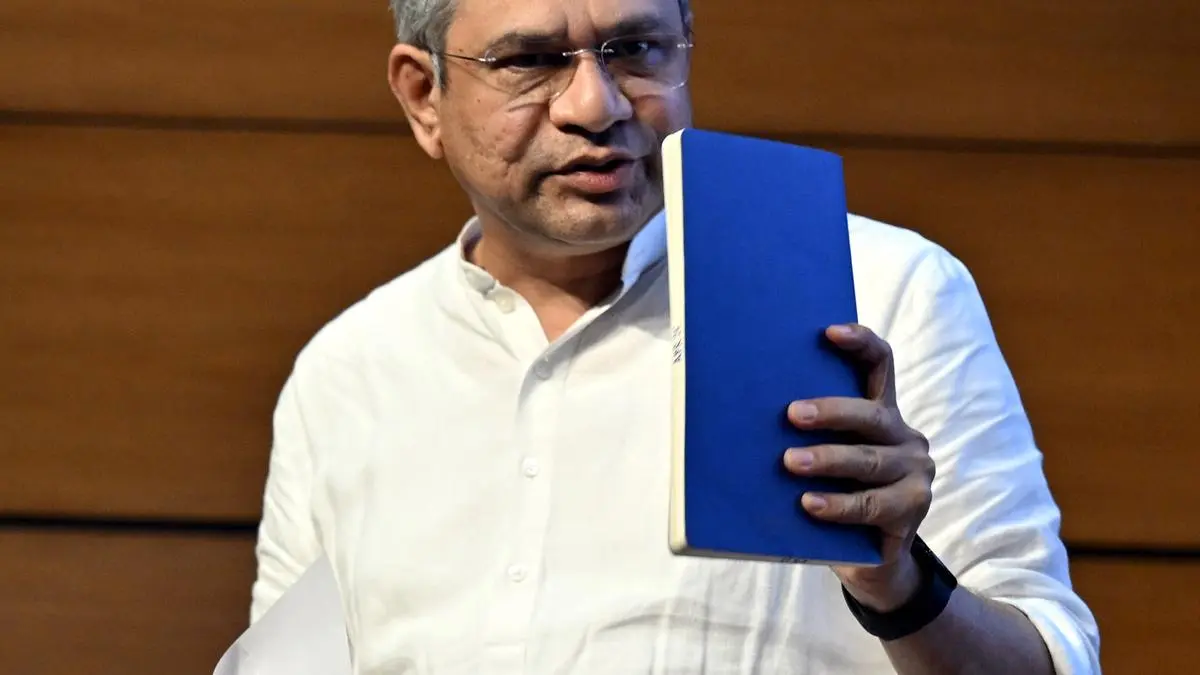Union Minister for Information and Broadcasting Ashwini Vaishnaw briefing the media on Cabinet decisions on Wednesday
| Photo Credit:
SHIV KUMAR PUSHPAKAR
The BJP-led government on Wednesday pulled the rug out of the Opposition’s major plank based on caste Census by approving caste enumeration in the country’s upcoming national Census. This will be the first caste Census since 1931.
“Under the leadership of Prime Minister Narendra Modi, the Cabinet Committee of Political Affairs has decided today, that caste enumeration should be included in the forthcoming Census. This demonstrates that a government is committed to the values and interests of a society and country,” Ashwini Vaishnaw, Union Minister for Information and Broadcasting, said on Wednesday.
“This demonstrates that our government is committed to the values and interests of our society and country, like in the past when our government had introduced 10 per cent reservation for the economically weaker sections of the society without causing stress in any section,” he added
Effectively, the BJP has now taken away Congress’ biggest political plank which the Leader of Opposition Rahul Gandhi has been talking about consistently for the past several years. The decision, finalised by the Cabinet Committee on Political Affairs, is a high-stakes gambit to reclaim lost ground among electorates in the Hindi heartland.
The Congress was taken off guard but recovered quickly to claim that it was their insistence that prompted the government to act. “Better late than never,” senior Congress leader Jairam Ramesh wrote on X; while asserting that it was the Congress that has been seeking a caste Census since 2023.
By embedding caste in the Census — a Central subject under Article 246 — the Modi government aims to standardise data collection, sidestepping the patchy, often politicised state-level surveys. States such as Bihar and Karnataka have conducted caste surveys, but there have been allegations of bias and non-transparency.
Taking a dig at the Congress, Vaishnaw said Congress and its INDIA alliance partners have used caste census time and again as a political tool and added the previous UPA governments failed to conduct a caste census but held surveys.
2024 Setback in UP
The decision, finalised by the Cabinet Committee on Political Affairs, is a high-stakes gambit to reclaim lost ground among in the Hindi heartland, especially in Uttar Pradesh that sends 80 MPs to Parliament. Congress and SP’s campaign on Constitution and caste undermined the BJP’s Hindutva plank in 2024 polls with its tally plummeting from 62 seats in 2019 to just 33 (out of 80) in the last year’s general election. Its vote share slid from 49.6 per cent to 41.4 per cent. The opposition INDI alliance capitalised on caste alignments, clinching 43 seats—SP alone bagging 37.
In this context, the inclusion of caste in Census data is a bold bid to reset the electoral chessboard.
Previous caste Census
For decades, India avoided caste-based Census data, last comprehensively collected in 1931.
The Congress-led government in 2011-12 carried out a Socio-Economic and Caste Census (SECC), which Vaishnaw criticised as a “half-measure”, politically expedient and incomplete.
“Congress governments have always opposed caste Census,” the Minister said.
The BJP’s move is a calculated pivot to reclaim caste-based voter blocs ahead of future elections, signaling a commitment to social equity while reinforcing its governance credentials.
Published on April 30, 2025
